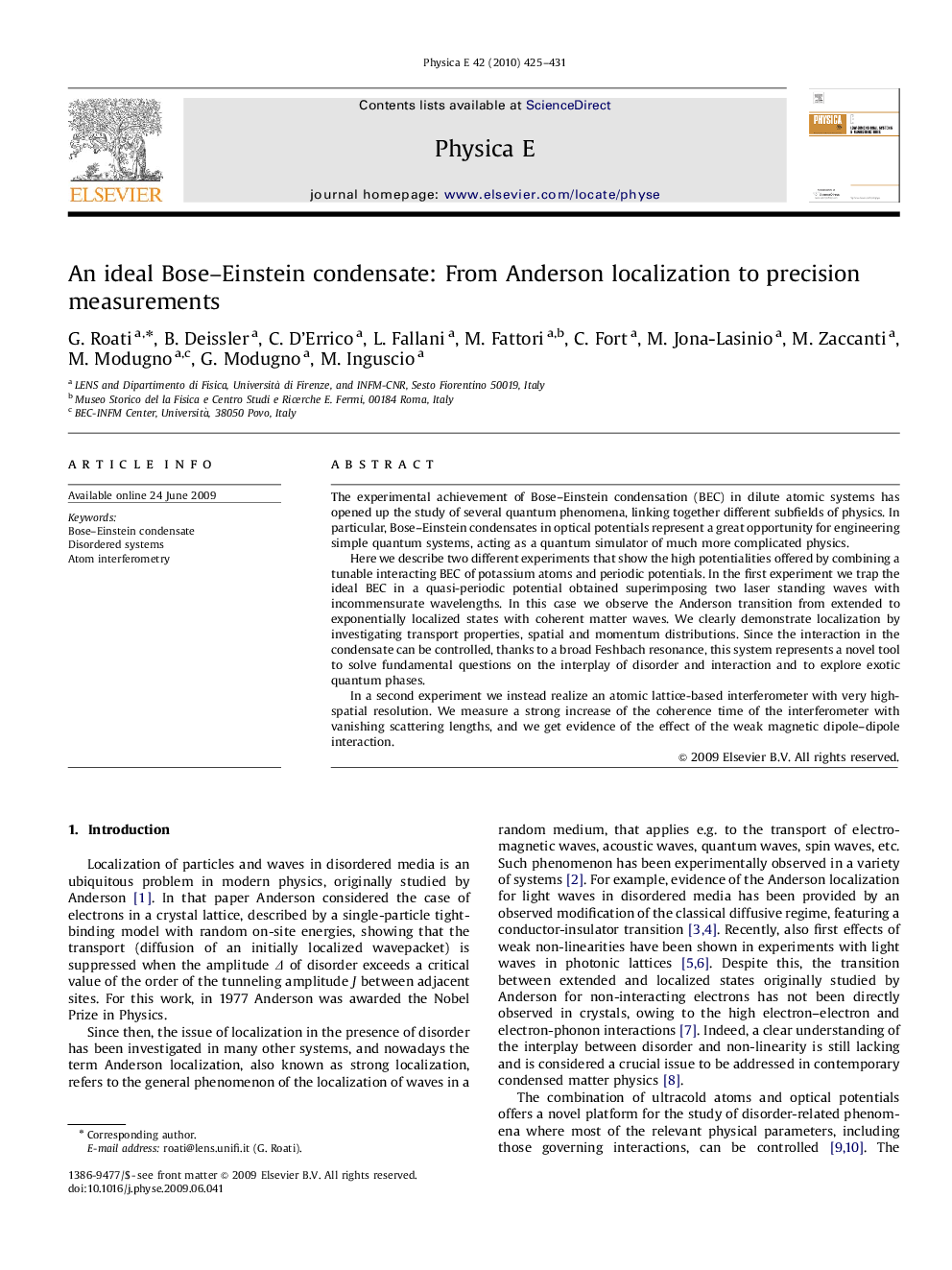| Article ID | Journal | Published Year | Pages | File Type |
|---|---|---|---|---|
| 1546448 | Physica E: Low-dimensional Systems and Nanostructures | 2010 | 7 Pages |
The experimental achievement of Bose–Einstein condensation (BEC) in dilute atomic systems has opened up the study of several quantum phenomena, linking together different subfields of physics. In particular, Bose–Einstein condensates in optical potentials represent a great opportunity for engineering simple quantum systems, acting as a quantum simulator of much more complicated physics.Here we describe two different experiments that show the high potentialities offered by combining a tunable interacting BEC of potassium atoms and periodic potentials. In the first experiment we trap the ideal BEC in a quasi-periodic potential obtained superimposing two laser standing waves with incommensurate wavelengths. In this case we observe the Anderson transition from extended to exponentially localized states with coherent matter waves. We clearly demonstrate localization by investigating transport properties, spatial and momentum distributions. Since the interaction in the condensate can be controlled, thanks to a broad Feshbach resonance, this system represents a novel tool to solve fundamental questions on the interplay of disorder and interaction and to explore exotic quantum phases.In a second experiment we instead realize an atomic lattice-based interferometer with very high-spatial resolution. We measure a strong increase of the coherence time of the interferometer with vanishing scattering lengths, and we get evidence of the effect of the weak magnetic dipole–dipole interaction.
